Big Chico Creek Ecological Reserve: ‘Where Education Meets the Land’
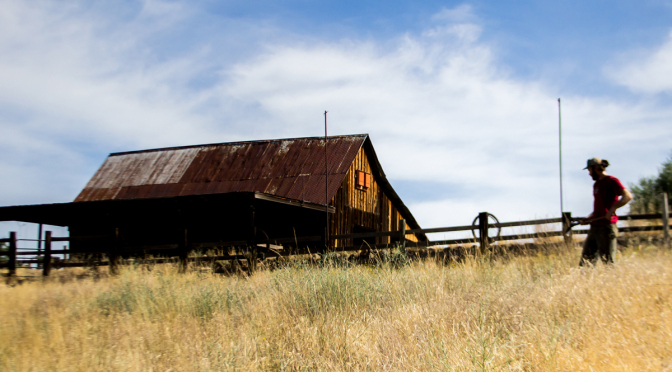
By Zachary Phillips; photographs by Ernesto Rivera, editorial assistants—Public Affairs and Publications
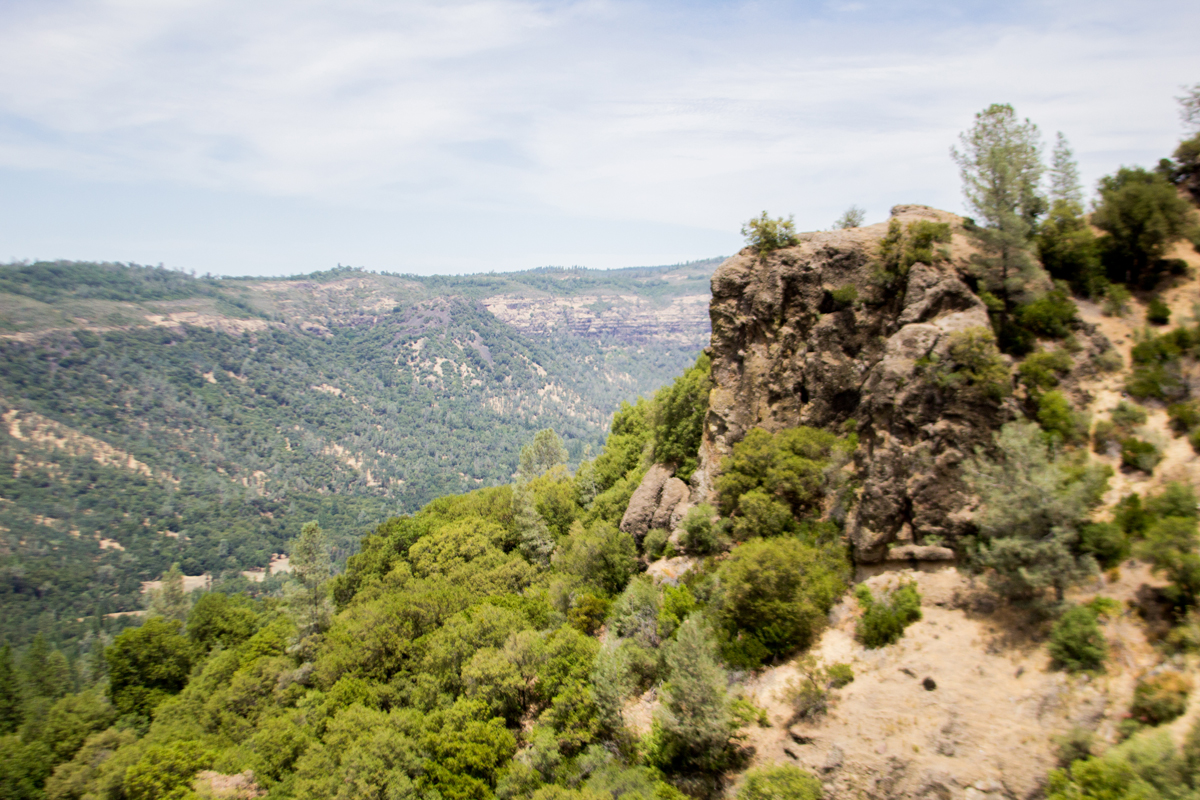
By 10 a.m. on July 1—what was supposed to be one of Chico’s hottest summer days —most people are shacked up inside an air-conditioned building or waist-deep in One Mile. Either of those seem like a distant reality, however, from where we’re standing—17 miles east of town in a workshop overlooking miles of creek and canyon, seconds away from sniffing an uncapped bottle of mountain lion urine.
“That’s the stuff you want to wear on a Friday night out on the town,” jokes Jamie Visinoni, the reserve’s manager, as the bottle gets passed around.
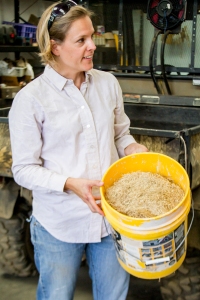
Our introduction to a conservationist’s tools of the trade—rakes, shovels, the Woodsman’s Pal (or as Visinoni calls it, the Crocodile Dundee knife), and animal pheromones included—was just the start of our day-long tour of the Big Chico Creek Ecological Reserve (BCCER), one of Chico State’s best-kept secrets; and yet, one of its most widely used resources.
Those who have never heard of the BCCER before are likely in good company. Well out of town and down a winding gravel road that’s barely visible from the highway, it’s not the kind of place one just stumbles upon on any given day.
However, for a wide range of students—environmental science majors, agricultural studies majors, biology, anthropology, the list goes on—and many other members of the Chico community, the BCCER is an invaluable source for research, education, and conservation.
“Our primary mission is to provide a platform for research and education while preserving critical habitats, those areas that are crucial in the conservation of native species,” Visinoni explains.

The reserve itself is no small piece of property, stretching across 3,950 acres of land and including four and a half miles of Big Chico Creek. That’s bigger than both Upper and Lower Bidwell Park combined. Thankfully, the BCCER staff have come prepared.
A Kubota offroader—one of several biodiesel-fueled vehicles on the reserve—pulls up to the workshop. Behind the wheel sits Kohner Vugrenes, land steward for the reserve and a May 2015 environmental sciences grad.
In addition to participating in the usual conservation efforts on the reserve, Vugrenes spends a lot of his time in the workshop, maintaining and repairing equipment.

In the back seat of the offroader and on my left sits Jon Aull, the reserve’s outdoor education coordinator. Most of his time is dedicated to organizing and leading educational field trips for local K-12 students. Many of these field trips are funded by the CSU, Chico Research Foundation and local donors, and usually bus out kids from low-income and underserved communities free of charge for a day of hands-on field research.
“Our motto is ‘where education meets the land,'” Aull says.

To my right sits Visinoni. A Chico State biology alum herself, Visinoni has just finished her first month on the job as the BCCER’s manager. Previously, she worked as a biologist for the Department of Defense.
It only takes us a couple minutes to reach our first stop along the tour, at a clearing of tall, brown grasses. The reason for the stop is less about a place, though, and more about a person.
“Paul Maslin, would you like to issue a statement?” Vugrenes calls out.
“I’m just part of the wildlife,” Maslin replies.
Paul Maslin, Chico State biology professor emeritus, has been an integral part of the reserve since the land was first purchased in 1999 and 2001. Back then, the University had yet to jump on board with the grassroots efforts of Maslin and his fellow conservationists.
He and what is now known as the Big Chico Creek Watershed Alliance teamed up to purchase land from the Simmons and Henning Ranches with the goal of stemming the effects of destructive invasive species and preserving natural habitats on the edge of extinction. It wasn’t until later that Maslin approached the Research Foundation in hopes of forming a partnership, thus creating the outdoor educational resource we see today.

Currently, Maslin is one of several volunteers who work on the reserve in the research and restoration of natural habitats. Several of the reserve staff mentioned how Maslin never stops teaching, never stops learning, and never stops working. And as we stand on the edge of the clearing talking to the man, I can see what they mean. He proceeds to recount the history of the reserve and his involvement with the land, all the while swinging a pickax at the ground, severing stalks of invasive star thistle at the base.
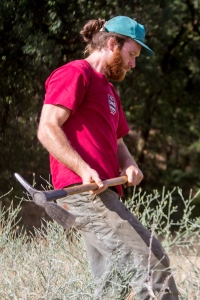
For Maslin, the protection and rehabilitation of natural habitats is paramount. The various services provided by the reserve—classes for younger kids, research opportunities for college students, etc.—are all just vehicles to achieve a greater, broader goal.
“What I think this place should be is a place where people work with the land and learn about the land,” Maslin says. “What is going on here? How can people work with the land to keep its natural diversity?”
In regard to a conservationist’s specific practices, Maslin explains that there’s no single textbook that can teach a person conservation. When it comes to protecting natural habitats, you have to know the area around you. You have to visualize what the land looked like hundreds of years ago before destructive human intervention, what it’ll look like 50 years from now after ceaseless work.
It’s that same ceaseless work, the day-to-day battles against destructive species, that adds up over time, according to Maslin. On this day, he and Quin Troester, one of the student employees on the reserve, are cutting star thistle down to the base before it goes to seed. Eventually, they will use a series of prescribed burns to scour the entire clearing, killing off the star thistle and allowing native, fire-adapted grasses to grow in its place. Maslin calls this process “mow, burn, seed, and weed.”

It’s a practice that the reserve has been perfecting for seasons, and the effects are easy to see.
“You can see, we only have star thistle every five feet or so, as opposed to years ago when there was one every couple of inches,” Maslin says. “I think the biggest thing we can do is generate people that move through here and spread the idea of how humans belong on the landscape and need to take care of the landscape.”
Although Maslin played a key role in the administrative side of founding the BCCER—writing grants, negotiating with landowners, partnering with the University—I got the sense that his real comfort zone is in the field, swinging a pickax, doing the same labor-intensive work as the reserve’s staff, interns, and volunteers.
And as the day progresses, it becomes clear that his presence and guidance has had a lasting impression on those whom he has taught.
“Paul’s famous saying that I remember the most is that ecology is like a religion, and you practice your religion in the church,” Vugrenes says as we walk back to the Kubota. “This place is his church.”
“So, this is where Paul lives,” Visinoni jokes as we approach an old, beaten-down shack on the edge of an abandoned cattle ranch. The shack, along with other man-made objects that litter the field, are now protected as artifacts. Any debris 50 years or older in the area is considered a part of the ecosystem.
Vugrenes takes us down the road a ways and off on some side trails by foot, pausing often to smell bay trees and spicebush and recount his mixed successes with brewing herbal teas. He explains that carving out trails and clearing them of debris is a daily chore at the reserve, but an important one.
“Paul always says that a good trail is visible from space,” he says.

Vugrenes also sheds some light on the integral role that the reserve plays in countless Chico State students’ lives. For him, an employee of the BCCER since 2013, nothing can match the hands-on experience he has gained working with species and habitats native to Chico.
The same can be said for countless other faculty and students—graduates and undergraduates, and from a wide array of majors—who use the reserve as a source for hands-on field work and research, whether it’s for a thesis project or a class field trip.
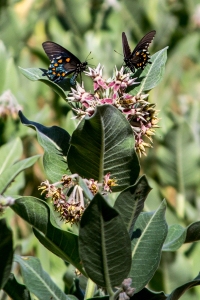
On our way down to the creek, I talk to Aull about his work with local K-12 students. He says that his favorite class to teach is a birding course. The reserve provides students with binoculars and takes them on a day-long expedition of bird spotting and identification.
“It’s a great way to get kids looking at wildlife and the diversity around them,” he says. “We could have over 100 different species of birds here (native or migratory) at different times of the year, so it’s a great introduction to wildlife. And seeing wildlife is a pretty exciting thing for the kids. You can’t always show people bears, but birds—you can usually find a bird out here.”
Like Maslin, Aull believes in a greater cause behind the classes that bring students to the BCCER. He says that, although the classes have little effect on the reserve itself and the staff’s restoration efforts, it’s important to instill a sense of responsibility for nature in kids while they’re young.
“All the things that we are seeing now—the fire suppression, the invasive plants—that’s all the effects of human activity,” Aull says. “We’ve already altered the landscape so much that we can’t decide just to leave it alone now. It’s really our responsibility to continue to manage it.”
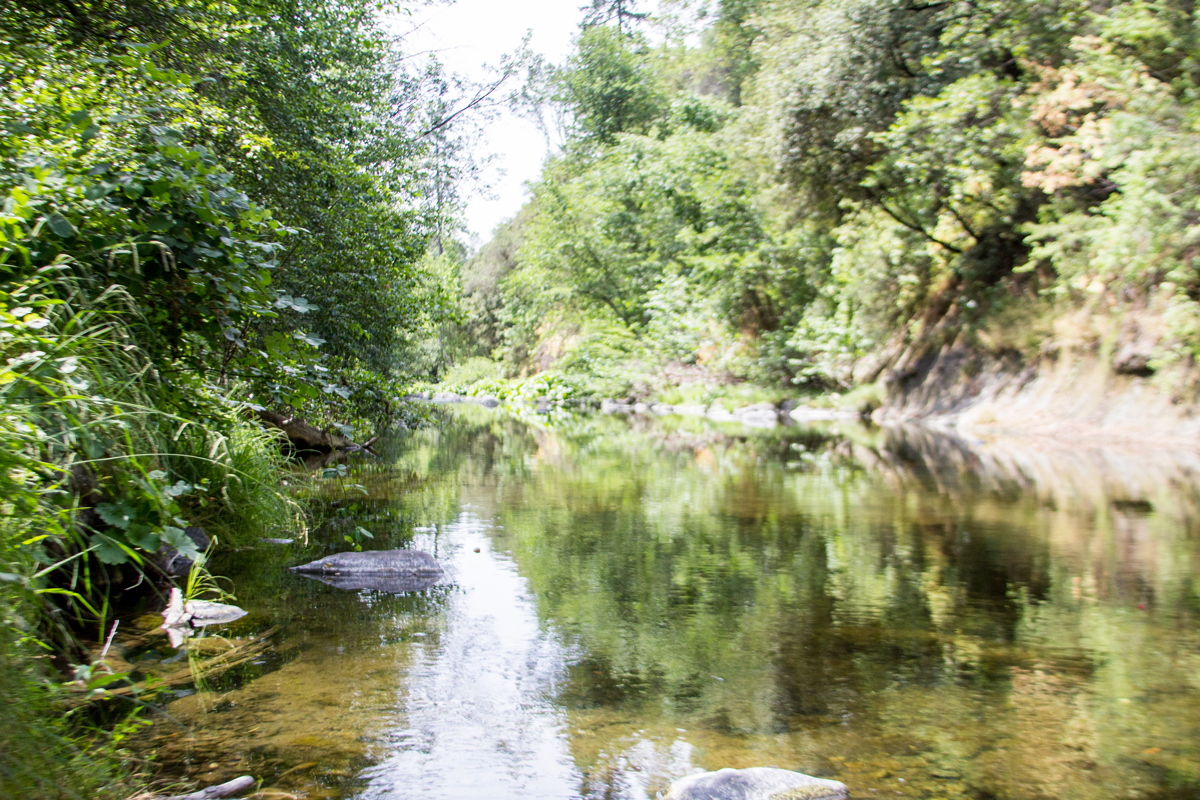
Our tour ends at Perspective Point, a cliff overlooking the entire reserve close to its entrance. From here, we can see the ridge over Henning Hole where we ate lunch, the trails as they arc over hills and disappear beneath the forest, and the frames of Maslin and Troester, still hard at work close to headquarters. We can even hear the sounds of their voices and tools echoing off of the canyon walls.
On the way up to the cliff, Visinoni talks about her transition into life on the reserve. She says that there are two sides to her job as manager. There’s this side—being out in the field and working the land with the rest of the staff—and then there’s the administrative side that keeps her behind a desk and on the phone.
Regardless of if she’s indoors or out, Visinoni says that working on the BCCER is a virtual dream job.
“I’ve never worked with a group of people that are this passionate about what they’re doing and recognize the impact they have on the world,” she says. “That passion will allow you to get over the largest of hurdles. I’m in awe of their efforts, every day.”
I ask her if she’s been able to see the entire reserve up close yet, in the short month she’s been on job.
“Oh, no!” she replies, half laughing. “I think the only person who has really seen it all is Paul.”
The Big Chico Creek Ecological Reserve is under the direction of the CSU, Chico Research Foundation. For more information on the reserve, its operating hours, and its services, visit the BCCER’s homepage. To schedule a visit with the reserve, visit the Reserve Access Management System (RAMS) page. For information on how you can donate to the reserve, visit the BCCER’s donations and gift-giving pages.



